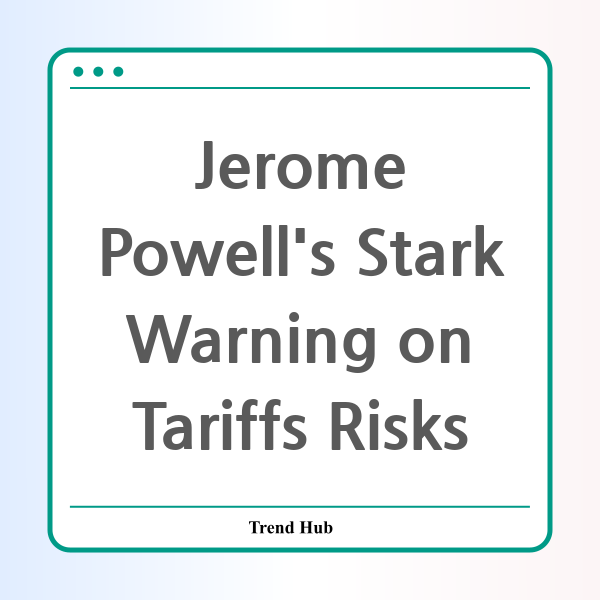* This website participates in the Amazon Affiliate Program and earns from qualifying purchases.

As global markets react to unprecedented policy changes, Federal Reserve Chair Jerome Powell has sounded an alarm that every American should heed. His latest remarks have heightened concerns about the economic implications of President Trump's tariff policies, which may lead the U.S. towards troubling economic times. Are we on the brink of a scenario reminiscent of the stagflation crises of the 1970s? In this blog post, we take a closer look at Powell's insights and the dire potential consequences of the current tariff strategies.
During a recent event with the Economic Club of Chicago, Powell elucidated that President Trump's tariff measures are unlike anything the modern economy has encountered. "These are very fundamental policy changes," he stated. With the Federal Reserve caught in uncharted waters, the implications of these tariffs could lead to weakened economic growth, higher unemployment, and rising inflation—all at the same time. This interaction of economic forces represents a complex dilemma for the Fed's dual mandate of promoting maximum employment while ensuring price stability.
The Dow Jones Industrial Average fell sharply—down 700 points, or 1.7%—as the ramifications of Powell's warning began to resonate with investors. This stark decline in market confidence reflects the joint worries over growth and inflation that Powell highlighted. He pointed out, "We may find ourselves in the challenging scenario in which our dual-mandate goals are in tension." This tension is driven primarily by the uncertainty surrounding tariffs, which Powell noted could result in lasting economic damage.
So, what exactly are these tariffs? President Trump has enacted significant tariffs on several imports: 25% on aluminum and steel, alongside a 145% tariff on Chinese goods, and 25% duties on cars, among others. With additional tariffs likely on semiconductors and pharmaceuticals, one must ask how such tariffs can coexist with economic stability.
Economists warn that these tariffs serve as a severe negative supply shock, threatening to drive up prices while simultaneously pushing job losses and a slow in growth. Chicago Fed President Austan Goolsbee echoed Powell's concerns, emphasizing that this leads to a stagflationary environment—where inflation rises alongside unemployment, a scenario our economy hasn't faced robustly since the late 20th century.
Looking back to the 1970s, we remember that under Fed Chair Paul Volcker, the focus was on combating inflation even at the cost of economic pain. Today, Powell faces a similar choice but in a vastly different economic landscape. The Fed must carefully consider how far the economy is from achieving its employment and inflation targets, especially as it navigates these uncertain waters.
So what can we expect moving forward? As Powell indicated, while the Fed’s immediate course is to remain steady, the evolving data will be crucial in determining future monetary policy adjustments. He mentioned the importance of monitoring inflation expectations closely, as the perception of future prices could trigger a shift in Fed strategy. If inflation rises significantly, we might see a return to interest rate hikes—a critical tool in the Fed’s arsenal that could further impact economic growth.
In conclusion, Jerome Powell’s stark warning should serve as a wakeup call. The interplay between Trump’s tariffs and economic stability generates a complex landscape for both policymakers and citizens. Will the U.S. economy navigate this storm successfully, or will we find ourselves grappling with the consequences of stagflation? As always, staying informed and prepared will be key as we move forward.
* This website participates in the Amazon Affiliate Program and earns from qualifying purchases.